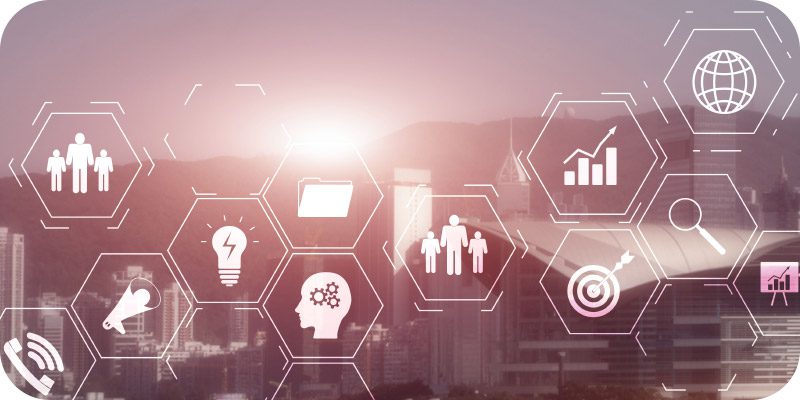4 Truths to Addressing 2025’s Critical IT Challenges in Aging Infrastructure, Stalled AI initiatives and Productivity

DXC’s Holland Barry offers commentary on key truths to addressing critical IT challenges in aging infrastructure, stalled AI initiatives, and productivity. This article originally appeared in Insight Jam, an enterprise IT community that enables human conversation on AI.
In today’s fast-changing business landscape, enterprise leaders are facing tough challenges that threaten their ability to innovate, grow, and stay competitive.
Aging infrastructure, failed AI investments and productivity hurdles across remote and on-site teams. For CIOs, CTOs and IT leaders, these challenges aren’t just minor inconveniences, but ones that demand bold, strategic action to overcome. In my webinar, Powering What’s Next: 2025 Business transformation through technology, I explore some of the critical challenges that leaders are facing and how forward-thinking companies are turning these challenges into opportunities for success.
Technical Debt is Holding Businesses Back
From legacy applications to tangled infrastructure, technical debt is impeding progress, making modernization slow, costly and frustrating for organizations trying to innovate. And many organizations are spending more time and money managing this debt than innovating because complex architectures and outdated processes make modernization painfully slow. IT teams are spending more just to keep systems running smoothly, as software and maintenance costs eat into budgets meant for innovation.
Enterprises spend up to 80 percent of IT budgets just to keep their organizations running, but maintaining outdated infrastructure can drain resources and stall transformation.
Modernizing Critical Infrastructure Drives Results
Organizations face an innovation-maintenance paradox: advancing technology while maintaining existing systems.
The problem is that many organizations have systems and data silos in place that were not designed with modern AI capabilities in mind. These systems often lack the scalability and flexibility required to support AI workloads, making it challenging to integrate new technologies or update existing ones.
Up-to-date systems can better handle the processing power and data demands of AI applications and custom AI solutions, ensuring improved performance and scalability.
A successful modernization project is far more than a simple upgrade; it’s a strategic, holistic transformation designed to boost efficiency, scalability and user experience. It begins with the disciplined work of implementing a proven framework and applying the right technology at the right time.
Our approach is to start with a clear strategy and an in-depth discovery of applications, infrastructure, and processes. Then we assess budgets, analyze all project dimensions, and review applications to ensure a seamless path forward.
Real Outcomes Require More Than AI for AI’s Sake
An MIT study found that 95 percent of AI pilot projects either fail or fall way short of whatever the project goals were. The study revealed that the real challenge was not the AI technology itself, but the difficulty of integrating it into existing enterprise systems and workflows.
Our experience indicates that many companies pursue AI for its own sake rather than starting with a clear business problem to solve.
A Productive, Connected Workforce Powers Innovation
While hybrid work is here to stay, it brings real challenges. Remote and hybrid teams collaborate less effectively, IT support requests are rising, and many software licenses go unused—wasting money that could fund innovation. Organizations also struggle with fragmented tools, aging equipment and inconsistent work setups.
Research shows that companies that excel in hybrid work do more than just provide the same tools across all locations. They’re intentional about when and where employees come together and how technology supports them.
By integrating work technologies and optimizing physical and digital spaces, these companies reduce employee friction and frustration while significantly boosting productivity.
Smart organizations are reimagining workplace technology by using real-time data and analytics to monitor, maintain and optimize the performance of hardware assets.
Infrastructure, AI & Productivity are Intertwined
Winning teams have learned that the savings from well-planned IT investments can be redirected to fuel innovation, whether that’s AI initiatives or paying down technical debt.
And when AI is properly deployed, it makes distributed teams more productive, and productive teams, in turn, reduce operational costs while enabling further innovation.
Even hardware updates can unlock massive gains. Modern servers can consolidate up to seven systems into one and shrink data footprints by as much as five times, reducing licensing, support and power costs while making management easier.
The message is clear: aging infrastructure, stalled AI initiatives and productivity hurdles are real barriers to success. Smart organizations are addressing these challenges by modernizing their critical systems, deploying AI strategically across their business, and streamlining work processes to reduce friction, extend asset lifecycles and free up capacity for innovation and future growth.




